The Family has changed • Today’s families
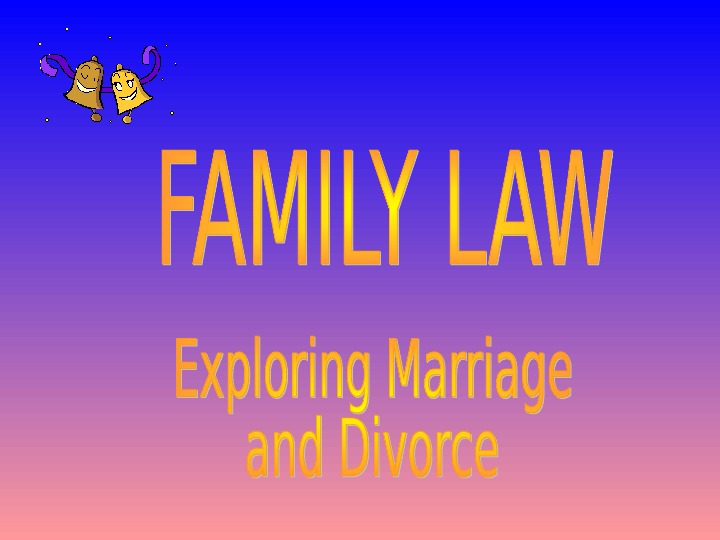
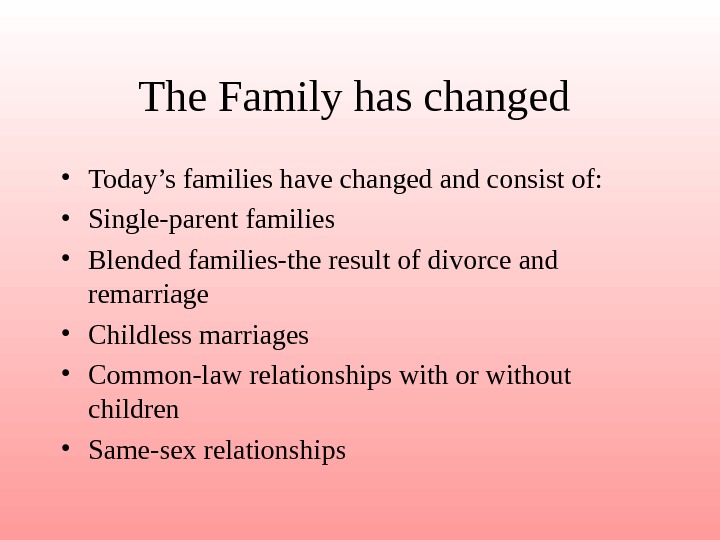

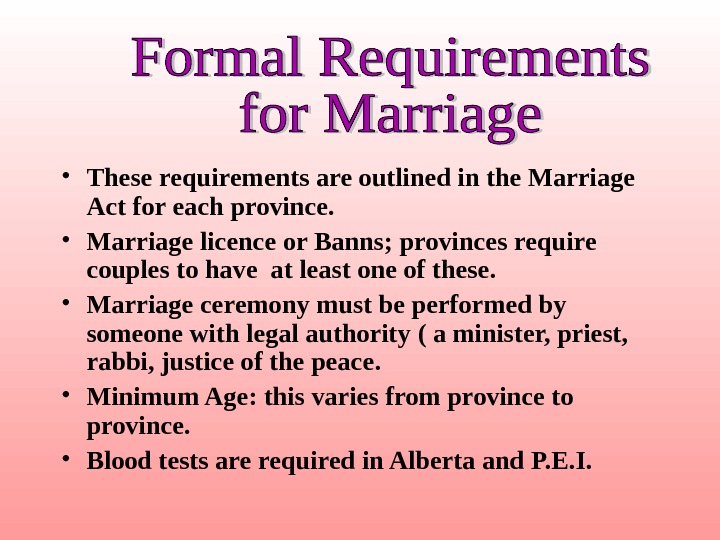
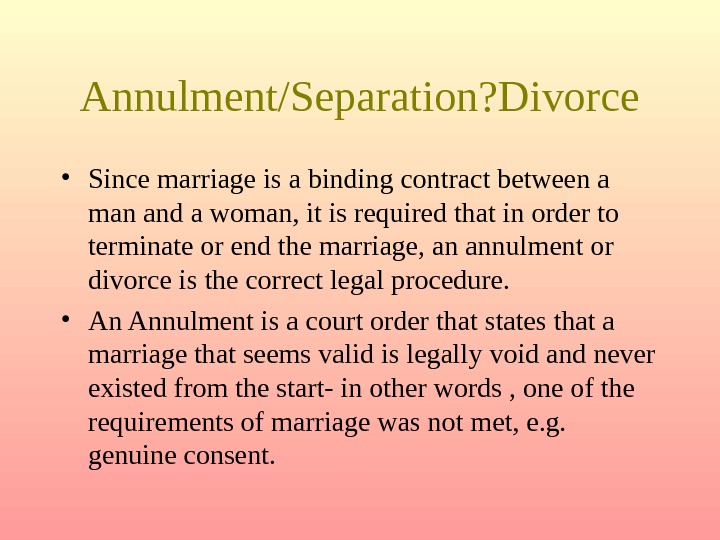
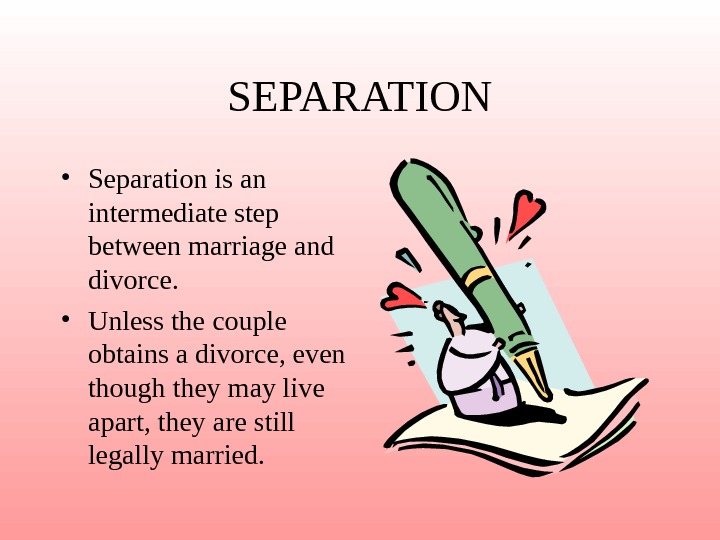
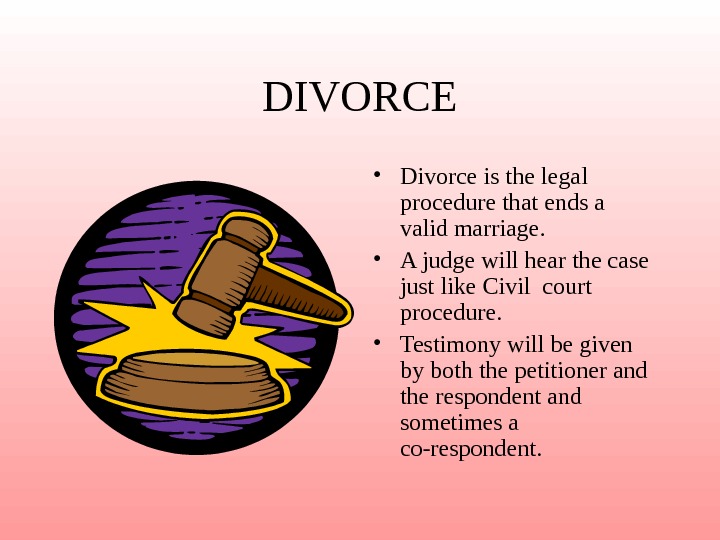
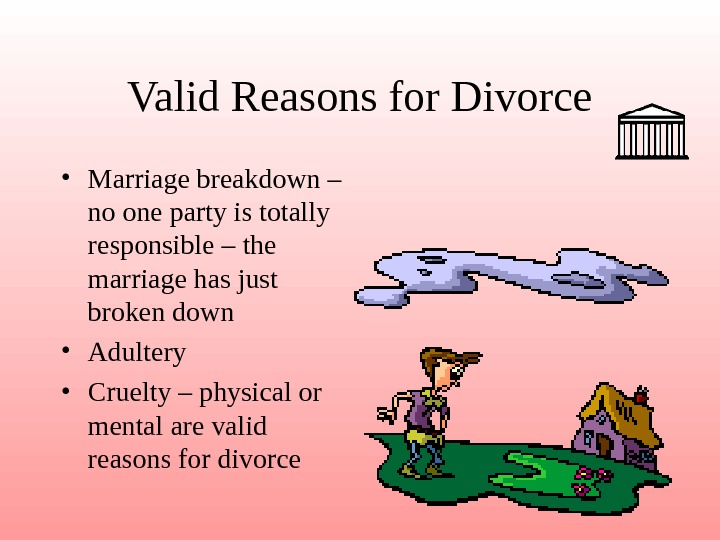
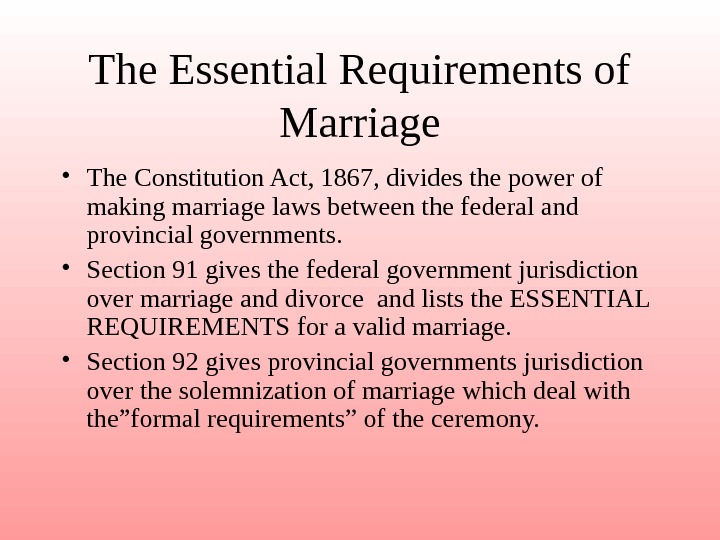
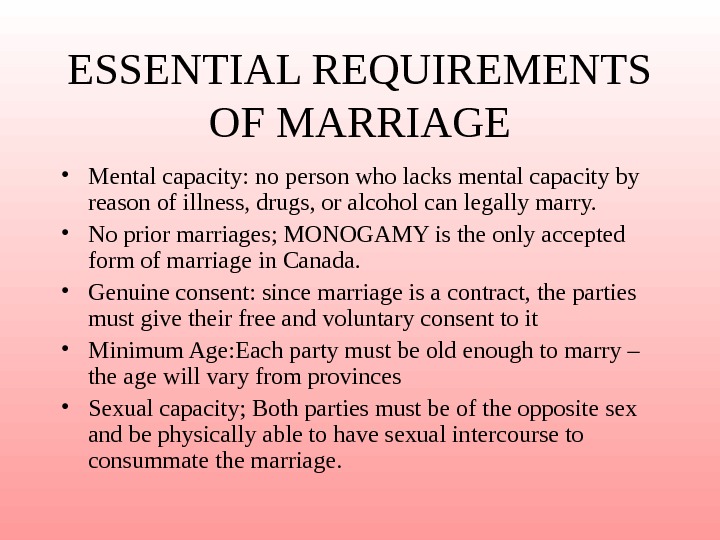
law_12_marriage_and_divorce_-_family_law.ppt
- Размер: 187 Кб
- Количество слайдов: 10
Описание презентации The Family has changed • Today’s families по слайдам

 The Family has changed • Today’s families have changed and consist of: • Single-parent families • Blended families-the result of divorce and remarriage • Childless marriages • Common-law relationships with or without children • Same-sex relationships
The Family has changed • Today’s families have changed and consist of: • Single-parent families • Blended families-the result of divorce and remarriage • Childless marriages • Common-law relationships with or without children • Same-sex relationships
 Other reasons for invalid marriages • Affinity: a marriage is not valid if the people are too closely related by marriage. • Consanguinity: marriage is not valid when the people are too closely related by blood.
Other reasons for invalid marriages • Affinity: a marriage is not valid if the people are too closely related by marriage. • Consanguinity: marriage is not valid when the people are too closely related by blood.
 • These requirements are outlined in the Marriage Act for each province. • Marriage licence or Banns; provinces require couples to have at least one of these. • Marriage ceremony must be performed by someone with legal authority ( a minister, priest, rabbi, justice of the peace. • Minimum Age: this varies from province to province. • Blood tests are required in Alberta and P. E. I.
• These requirements are outlined in the Marriage Act for each province. • Marriage licence or Banns; provinces require couples to have at least one of these. • Marriage ceremony must be performed by someone with legal authority ( a minister, priest, rabbi, justice of the peace. • Minimum Age: this varies from province to province. • Blood tests are required in Alberta and P. E. I.
 Annulment/Separation? Divorce • Since marriage is a binding contract between a man and a woman, it is required that in order to terminate or end the marriage, an annulment or divorce is the correct legal procedure. • An Annulment is a court order that states that a marriage that seems valid is legally void and never existed from the start- in other words , one of the requirements of marriage was not met, e. g. genuine consent.
Annulment/Separation? Divorce • Since marriage is a binding contract between a man and a woman, it is required that in order to terminate or end the marriage, an annulment or divorce is the correct legal procedure. • An Annulment is a court order that states that a marriage that seems valid is legally void and never existed from the start- in other words , one of the requirements of marriage was not met, e. g. genuine consent.
 SEPARATION • Separation is an intermediate step between marriage and divorce. • Unless the couple obtains a divorce, even though they may live apart, they are still legally married.
SEPARATION • Separation is an intermediate step between marriage and divorce. • Unless the couple obtains a divorce, even though they may live apart, they are still legally married.
 DIVORCE • Divorce is the legal procedure that ends a valid marriage. • A judge will hear the case just like Civil court procedure. • Testimony will be given by both the petitioner and the respondent and sometimes a co-respondent.
DIVORCE • Divorce is the legal procedure that ends a valid marriage. • A judge will hear the case just like Civil court procedure. • Testimony will be given by both the petitioner and the respondent and sometimes a co-respondent.
 Valid Reasons for Divorce • Marriage breakdown – no one party is totally responsible – the marriage has just broken down • Adultery • Cruelty – physical or mental are valid reasons for divorce
Valid Reasons for Divorce • Marriage breakdown – no one party is totally responsible – the marriage has just broken down • Adultery • Cruelty – physical or mental are valid reasons for divorce
 The Essential Requirements of Marriage • The Constitution Act, 1867, divides the power of making marriage laws between the federal and provincial governments. • Section 91 gives the federal government jurisdiction over marriage and divorce and lists the ESSENTIAL REQUIREMENTS for a valid marriage. • Section 92 gives provincial governments jurisdiction over the solemnization of marriage which deal with the”formal requirements” of the ceremony.
The Essential Requirements of Marriage • The Constitution Act, 1867, divides the power of making marriage laws between the federal and provincial governments. • Section 91 gives the federal government jurisdiction over marriage and divorce and lists the ESSENTIAL REQUIREMENTS for a valid marriage. • Section 92 gives provincial governments jurisdiction over the solemnization of marriage which deal with the”formal requirements” of the ceremony.
 ESSENTIAL REQUIREMENTS OF MARRIAGE • Mental capacity: no person who lacks mental capacity by reason of illness, drugs, or alcohol can legally marry. • No prior marriages; MONOGAMY is the only accepted form of marriage in Canada. • Genuine consent: since marriage is a contract, the parties must give their free and voluntary consent to it • Minimum Age: Each party must be old enough to marry – the age will vary from provinces • Sexual capacity; Both parties must be of the opposite sex and be physically able to have sexual intercourse to consummate the marriage.
ESSENTIAL REQUIREMENTS OF MARRIAGE • Mental capacity: no person who lacks mental capacity by reason of illness, drugs, or alcohol can legally marry. • No prior marriages; MONOGAMY is the only accepted form of marriage in Canada. • Genuine consent: since marriage is a contract, the parties must give their free and voluntary consent to it • Minimum Age: Each party must be old enough to marry – the age will vary from provinces • Sexual capacity; Both parties must be of the opposite sex and be physically able to have sexual intercourse to consummate the marriage.
